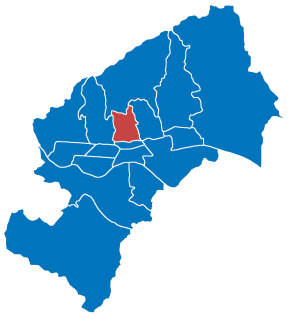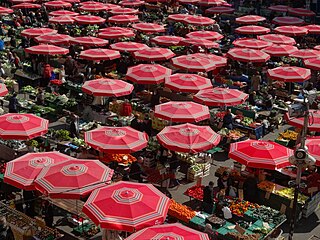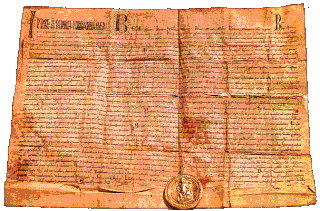Related Research Articles

Zagreb is the capital and largest city of Croatia. It is in the northwest of the country, along the Sava river, at the southern slopes of the Medvednica mountain. Zagreb lies at an elevation of approximately 122 m (400 ft) above sea level. The estimated population of the city in 2018 was 804,507. The population of the Zagreb urban agglomeration is 1,086,528, approximately a quarter of the total population of Croatia.

Donji grad is one of the 17 city districts of Zagreb, the capital of Croatia. It is located in the central part of the city and has 37,024 inhabitants. The official name of the district is rarely used, for it is dubbed centar (center) by most Zagreb residents even though "centar" encompasses some southern parts of district Gornji Grad-Medveščak.

Gornji Grad–Medveščak is one of the districts of Zagreb, Croatia; Gornji Grad translates as "Upper Town", referring to its historical location on city's hillside, being above Donji Grad. The district is located in the central part of the city and, according to the 2011 census, it has 30,962 inhabitants spread over 10.12 km2 (3.91 sq mi).

Kaptol is a part of Zagreb, Croatia in the Upper Town and it is the seat of the Roman Catholic archbishop of Zagreb. Due to its historical associations, in Croatian "Kaptol" is also used as a metonym for the leadership of the Roman Catholic Church in Croatia.

Gradec, Grič or Gornji Grad is a part of Zagreb, Croatia, and together with Kaptol it is the medieval nucleus of the city. It is situated on the hill of Grič. Today this neighbourhood forms part of the Gornji Grad-Medveščak district.
The history of Zagreb, the capital and largest city of Croatia, dates back to the Middle Ages. The Romans had built a settlement, Andautonia, in present-day Ščitarjevo. The name "Zagreb" was first used in 1094 at the founding of the Zagreb diocese in Kaptol, after the Slavs had arrived in the area. Zagreb became a free royal city in 1242. It was made the capital of Croatia in 1845 and elected its first mayor, Janko Kamauf, in 1851. According to the 2011 Croatian census, Zagreb had 792,875 inhabitants and was also Croatia's largest city by area.

Šalata is an upper-class residential neighborhood in Zagreb, Croatia. It is administratively part of the Gornji Grad - Medveščak city district in the northern part of Zagreb and it has a population of 1,929.

Dolac is a farmers' market located in Gornji Grad - Medveščak city district of Zagreb, Croatia. Dolac is the most visited and the best known farmer's market in Zagreb, well known for its combination of traditional open market with stalls and a sheltered market below. It is located only a few dozen meters away from the main city square, Ban Jelačić Square, between the oldest parts of Zagreb, Gradec and Kaptol. The Dolac market Zagreb is centrally located right behind the town’s main square.
Botinec is a neighborhood located in Novi Zagreb - zapad city district of Zagreb, Croatia. It is famous for having its streets named after famous character from Croatian theater plays and novels. It was founded in 1965 as a refugee camp after the 1964 flood, owing its rectangular street grid to the era of building Novi Zagreb. It was away from the city and away from Sava River, with barracks meant to serve as a camp only for up to six years, but the houses were eventually bought by the tenants and upgraded. Nonetheless, Botinec remains a neighborhood bearing the scar of the flood. Botinec is divided in two parts: Old Botinec and New Botinec. According to the 2001 census, Botinec had 4,906 inhabitants.

Eugen Kvaternik Square is a square located on the border between Maksimir, Gornji Grad - Medveščak and Donji Grad city districts of Zagreb, Croatia. It marks the intersection of Vlaška Street, Dragutin Domjanić Street, Maksimirska Street, Vjekoslav Heinzel Avenue, and Šubićeva Street. Kvaternik Square is one of the most frequented squares in Zagreb.
Medveščak is a creek in central Zagreb, Croatia. It flows from Kraljičin zdenac in Podsljeme down along the southern slopes of the Medvednica mountain to the Manduševac Fountain, its mouth. The creek was covered in 1898 and today forms part of the Zagreb sewer system. Medveščak has long served as an important geographical feature of historic Zagreb, delineating the border between the often warring twin cities of Gradec and Kaptol between the 11th and the 19th century and causing many violent floods which often decimated houses on its banks. Most of the stream is located in the Gornji Grad - Medveščak city district, running underground under Tkalčićeva and Medvedgradska Streets.

Ribnjak is a neighborhood in the Gornji Grad - Medveščak district of Zagreb, Croatia, directly east of the Zagreb Cathedral. According to the 2001 census, the neighborhood has 2,956 inhabitants. In 2011, the population was 1,324. It is centered mainly around its main north-south thoroughfare, the Ribnjak Street.
The Zagreb local elections of 2005 were held on 15 May 2005 in Zagreb, the capital of Croatia. Following the last local elections in 2001, Milan Bandić of the Social Democratic Party of Croatia (SDP) had been re-elected as the mayor of Zagreb. In 2002, an incident made him resign in favor of Deputy Mayor Vlasta Pavić, also from the SDP. Pavić remained formally in control of the city until 2005. In the 2005 elections, she was moved down the list of candidates to the 16th place, while the list holder and SDP's candidate for mayor was Bandić.

Tkalčićeva Street is a street in the Zagreb, Croatia city center. Extending from the vicinity of the central Ban Jelačić Square to its northern end at the Little Street, the street flows between the Gornji Grad in the west and Nova Ves in the east. The street is administratively within the Gornji Grad–Medveščak city district, constituting the former "August Cesarec" commune. According to the 2001 Croatian census, the street has 1,591 inhabitants.

The Golden Bull of 1242 was a golden bull or edict, issued by King Béla IV of Hungary to the inhabitants of Gradec during the Mongol invasion of Europe. By this golden bull, King Béla IV proclaimed Gradec a royal free city. The document was issued on 16 November 1242 in Virovitica and reaffirmed in 1266. The original is written on a piece of parchment 57 by 46 centimetres in size, and is kept in strictly controlled conditions in the Croatian State Archives in Zagreb, while a copy is exhibited in the Zagreb City Museum.

The Old City Hall is a complex of three adjacent buildings located in the Gradec neighbourhood in Zagreb, Croatia. The three buildings were joined in the late 19th century and since then, the complex has served as the place where all sessions of the city assembly are held.

The Kaptol manors form a series of 25 manors along the Kaptol Street in Zagreb, Croatia that were used to house canons and other officials of the Archdiocese of Zagreb. The manors were built at various times between the Middle Ages and the 19th century. Most of those preserved date from the Baroque period, while those in the best condition are mostly from the 19th century. The manors were designed as large town houses surrounded by gardens. Each has its own history and peculiarities. The most important are those which were inhabited by prominent canons.

Grič Tunnel is a pedestrian tunnel located in the city centre of Zagreb, Croatia, under the historic neighbourhood of Grič, which gave the tunnel its name. The tunnel consists of a central hall, which is connected by two passageways to Mesnička Street in the west and Stjepan Radić Street in the east, and four passageways extending to the south. It was built during World War II by the Ustaše government to serve both as a bomb shelter and a promenade, but following the war it quickly fell into disrepair and disuse. The tunnel saw renewed use only in the 1990s, hosting one of the first raves in Croatia, and functioning as a shelter during the Croatian War of Independence. In 2016, the tunnel was remodeled and opened to the public, serving as a tourist attraction and hosting cultural events. Planned expansions include a museum and a lift.
Ivan Krstitelj Tkalčić was a noted Croatian historian and a Catholic priest and prebendary.
Marija Braut was a Croatian photographer and one of the most significant artistic successors of the so-called Zagreb School of Photography.
References
- ↑ "Stanovnici Grada Zagreba prema dobnim skupinama i spolu" (PDF). Republic of Croatia Bureau of Statistics (in Croatian). 2001. Retrieved 2008-11-27.
- ↑ Zagreb.hr - Službene stranice Grada Zagreba - 7. Mjesni odbor Nova Ves
- ↑ Kolveshi, Željka. "Laška Ves and Nova Ves". City of Zagreb Museum. Archived from the original on 2015-09-24. Retrieved 2012-04-06.
- ↑ Premerl, Nada. "First Recorded Use of the Name of Zagreb". City of Zagreb Museum. Archived from the original on 2015-09-30. Retrieved 2012-04-06.
- ↑ "Nakon dvije godine radova svečano otvoren Centar Kaptol". Vjesnik (in Croatian). 2000-02-15. Retrieved 2015-01-08.
- ↑ "Prebendarski vrtovi > Location". Spiller Farmer d.o.o. Archived from the original on October 5, 2008. Retrieved 2008-11-27.